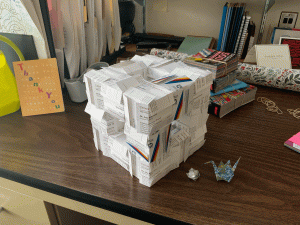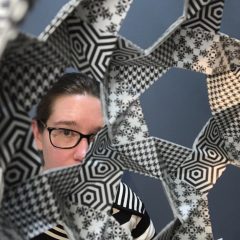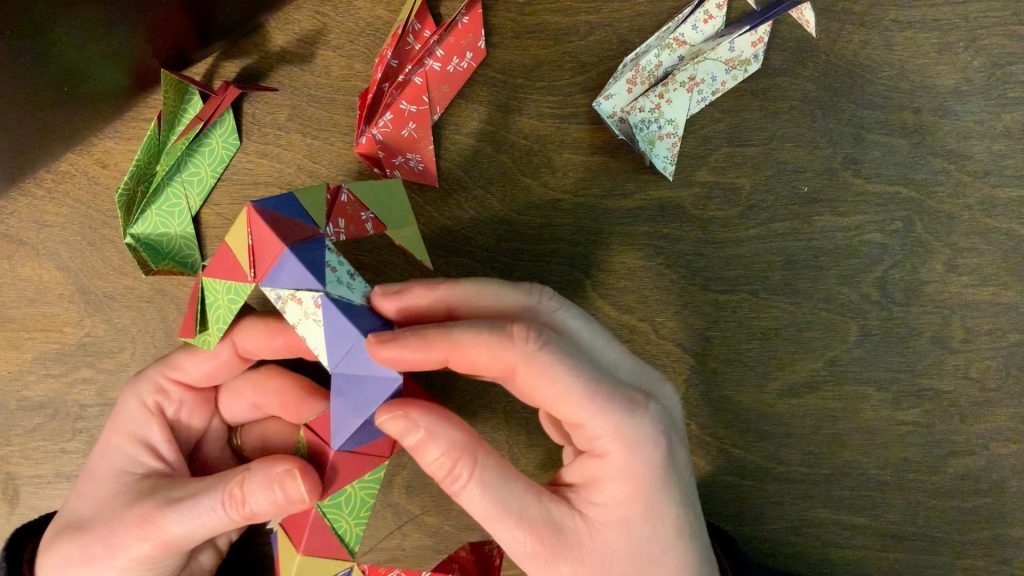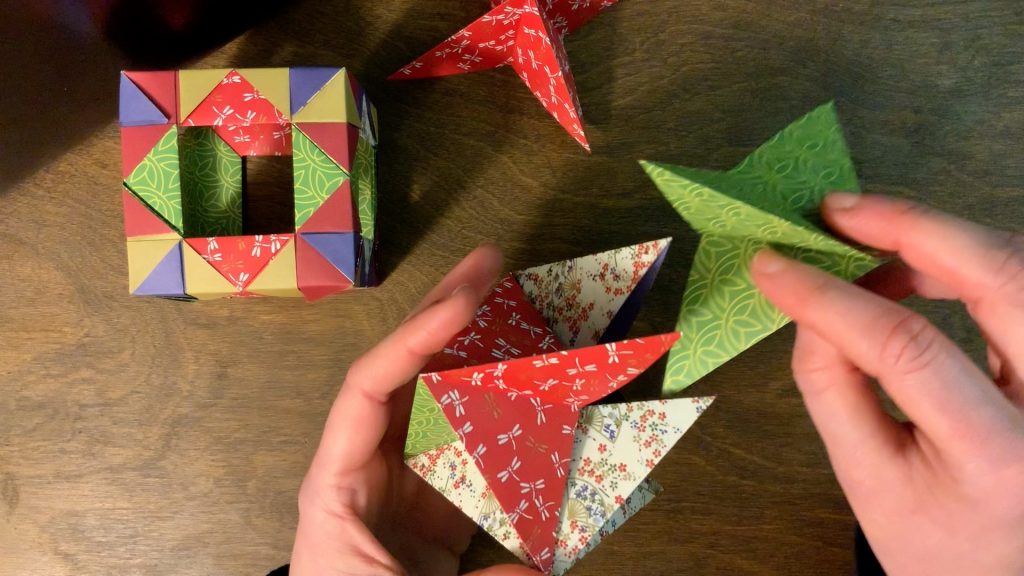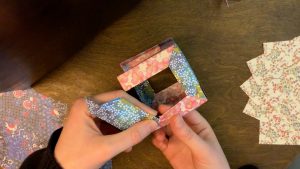Visit the classroom wing of the Elliot Building to see a display of mathematical origami starting in early December 2022. We hope our mathematical art brightens your December exam period!
Most of the models were constructed by members of the Association for Women in Mathematics student chapter at UVic and their friends. A few of the models you will see are listed below, and I will create some more detailed blog posts here for a few of them too, if you would like to learn more.
The Miura Map Fold
Koryo Miura, professor emeritus at the University of Tokyo, developed this fold in the 1970s, as a way of folding things like solar panel arrays so that they could be easily opened and closed for use in spacecraft. When used on somewhat rigid paper, the Miura Map Fold lets you unfold (and refold) your paper by just pulling (and pushing) on a pair of opposite corners.
For more details, visit https://en.wikipedia.org/wiki/Kōryō_Miura.
Self-similar Wave
From Thomas Hull’s book Project Origami, this is a self-similar origami model and can go on as long as your paper, and skill, permits.
Hyperbolic Paraboloid
Another model from Thomas Hull’s book Project Origami, this model might remind you of a surface from Multivariable Calculus. This model can also become as detailed as your skill allows.
Hexahedron
This model is due to Molly Kahn, and is an example of modular origami. The final shape is built from three identical units, which lock together.
Five Intersecting Tetrahedra
A tetrahedron is a platonic solid having four faces, each of which is an equilateral triangle. This model consists of five wireframe models of tetrahedra, interlaced together. Each tetrahedron has six edges, so it took one student 30 units (Francis Ow’s 60-degree unit) and about nine hours to build this model, following instructions from Thomas Hull’s book Project Origami.
Pentagon Hexagon Zig-Zag modules
This module is due to Thomas Hull, and is also called the PHiZZ module. It is useful for constructing wireframe models whose faces are pentagons or hexagons, because those result in sphere-like models. Graph theorists will recognize them as three-regular planar graphs, and many of our models are also properly three-edge-coloured because our graphs are Hamiltonian. The PHiZZ module can also be used to create a wireframe model of the torus, by including faces with more edges so as to introduce negative curvature. The models we built are listed below.
- Dodecahedron: this is a platonic solid having 12 faces, each of which is a regular pentagon. It requires 30 PHiZZ modules.
- Buckyball: familiar to both chemists and football fans, this wireframe model has 20 faces that are regular hexagons and 12 faces that are regular pentagons. It requires 90 PHiZZ modules.
- Torus: there are many models out there; we followed one due to the topologist dr. sarah-marie belcastro. It requires 84 PHiZZ modules.
Sonobe modules
Either due to Toshie Takahama or to Mitsunobu Sonobe, the Sonobe module is great for building all sorts of models. The models we built are listed below, and we followed instructions for making the module from Maths Craft New Zealand.
- Cube: this is a platonic solid having 6 faces, each of which is a square. It requires 6 Sonobe modules.
- Triakis octahedron: this is related to a regular octahedron, but each face of the octahedron has a pyramid built over it. It requires 12 Sonobe modules.
More platonic solids
You will find a wireframe model of a cube (following instructions from Tomoko Fuse’s book The Complete Book of Origami Polyhedra), which required 12 units to build.
You might wonder what is inside that cube! It is an octahedron, yet another platonic solid, which has 8 faces that are each equilateral triangles. This model demonstrates that the octahedron is dual to the cube. You will also find some octahedra on their own, not inside a cube. These octahedra are built from “water bomb” modules, and although I don’t know who to credit for the original design you can find instructions here. Each one requires 6 units to construct.
Recommended resources
Tomato Fuse, The Complete Book of Origami Polyhedra.
Mark Bolitho, The Art And Craft of Geometric Origami.
Thomas Hull, Project Origami.
